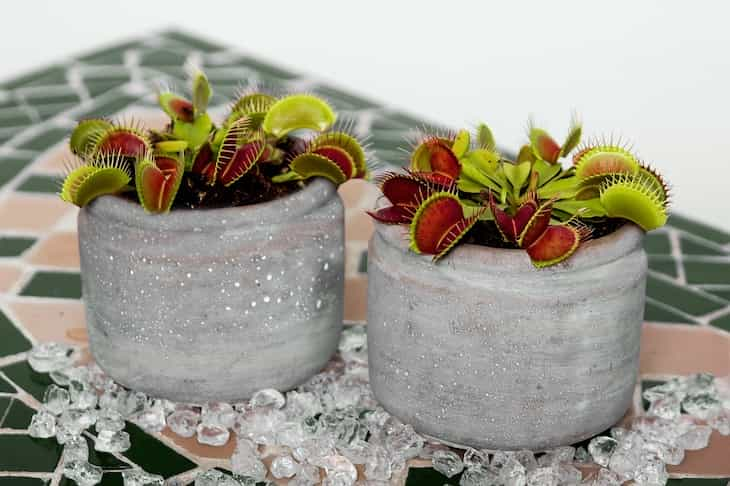If you love houseplants, but you're tired of the most popular kinds, then it's time to discover something new!
Nowadays, there are so many unusual houseplants you can buy or order online, so you don't have to limit yourself.
Here are a few unusual examples that will make your house more exotic!
Air Plants
Air plants, also known as Tillandsias, are fascinating plants that don't require soil to grow.
They absorb moisture and nutrients from the air through their leaves.

Air plants come in various shapes and sizes, and they can be displayed in creative ways, such as hanging them from the ceiling or placing them in decorative containers.
Venus Flytrap
The Venus Flytrap is a carnivorous plant that captures and consumes insects.
It has unique leaves with hinged traps that snap shut when triggered by a passing insect.
This plant is not only interesting to observe but also serves as a natural pest control method indoors.
However, caring for a Venus Flytrap requires specific conditions, such as providing it with a sunny spot and distilled water.
String of Pearls
The String of Pearls is a succulent plant with long trailing stems adorned with small, bead-like leaves that resemble tiny pearls.
It adds a touch of elegance and uniqueness to any space.
This plant thrives in bright, indirect light and requires well-draining soil to prevent root rot.
Pitcher Plant
The Pitcher Plant is another carnivorous houseplant that captures insects for nourishment.
Its leaves form pitcher-shaped structures that contain liquid, enticing insects to explore and eventually fall into the traps.
This plant can be a conversation starter and is best kept in a humid environment with bright, indirect light.
Staghorn Fern
The Staghorn Fern is a visually striking plant that grows epiphytically, meaning it attaches itself to other surfaces like trees or wooden mounts.
It has distinctive fronds resembling antlers, giving it the appearance of a stag's horn.
This fern requires bright, indirect light and regular misting or soaking to maintain its humidity needs.
Previously, we talked about gardening infection spreading.









